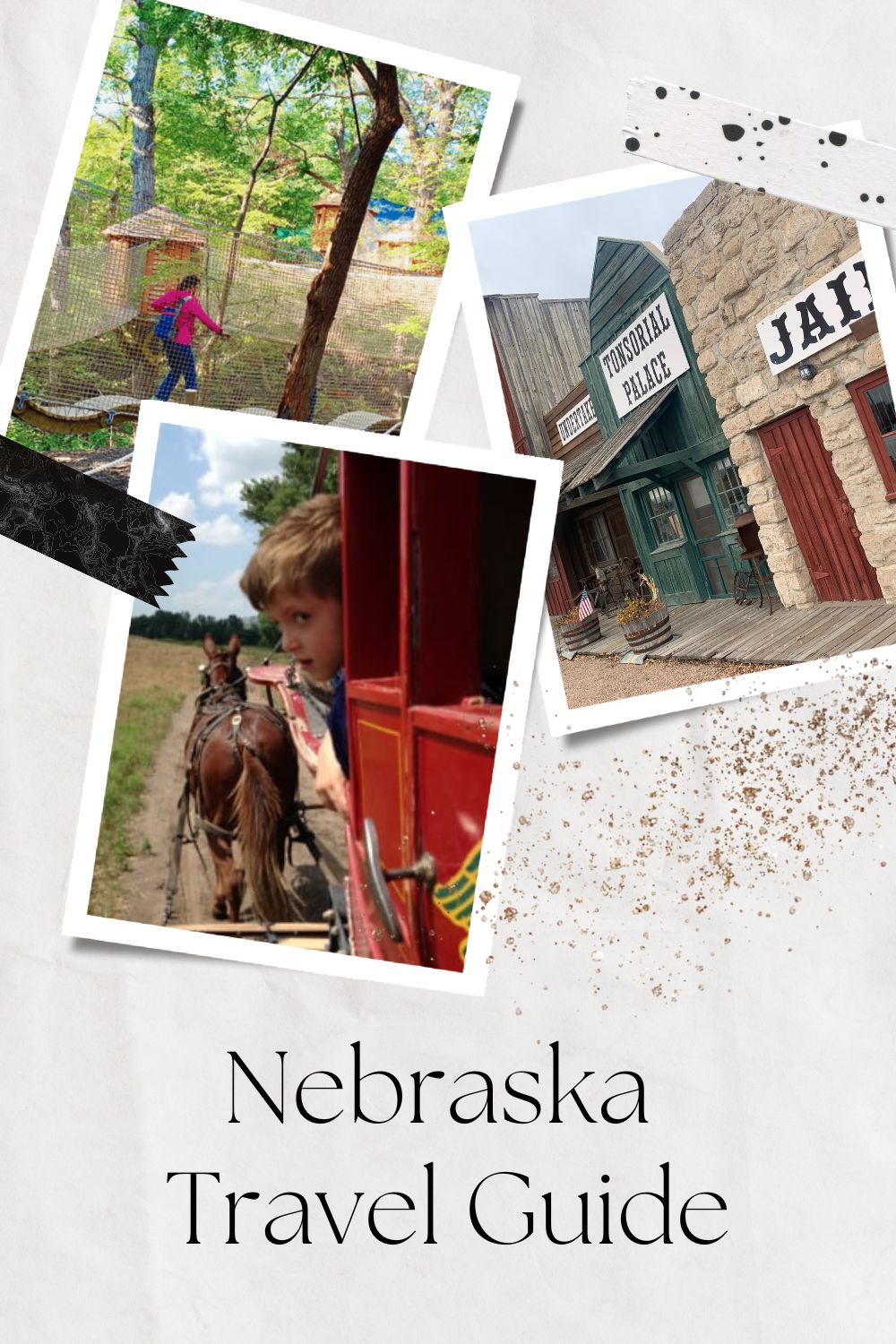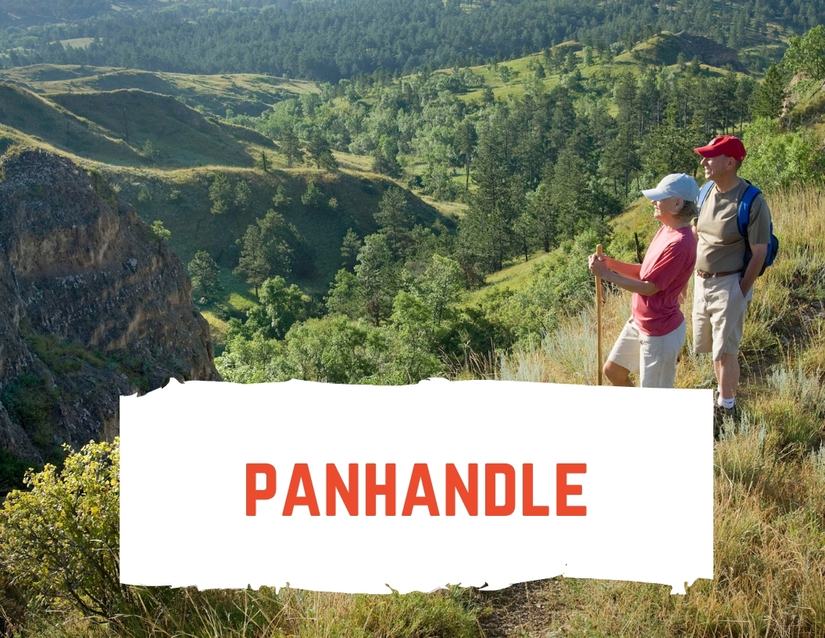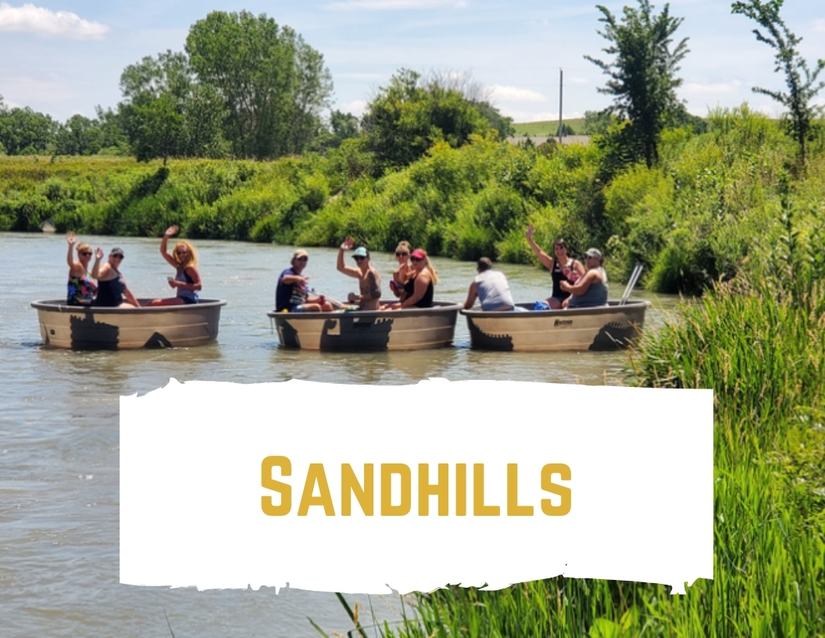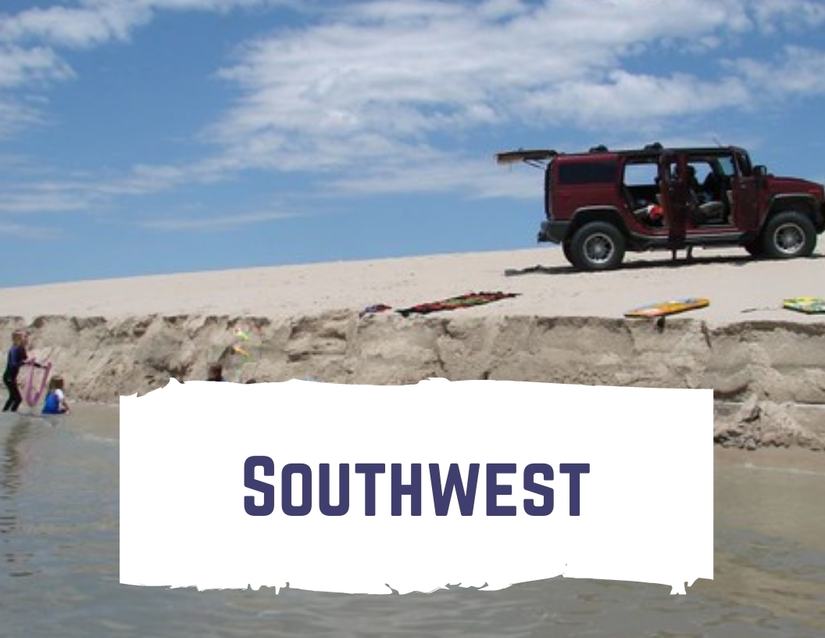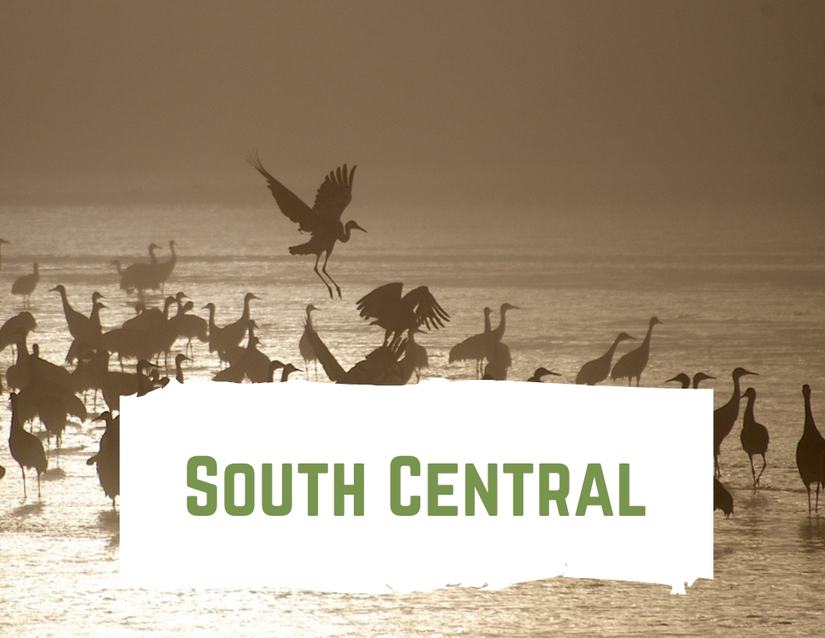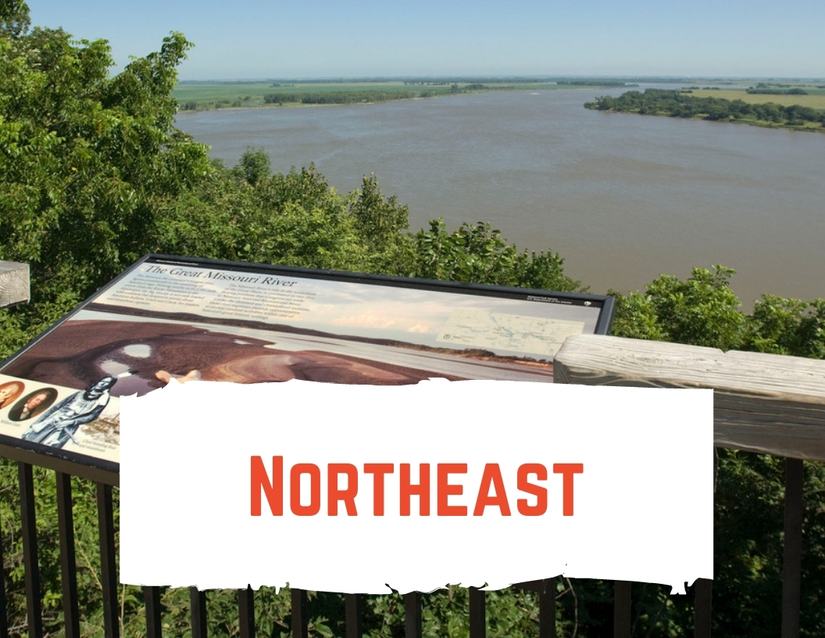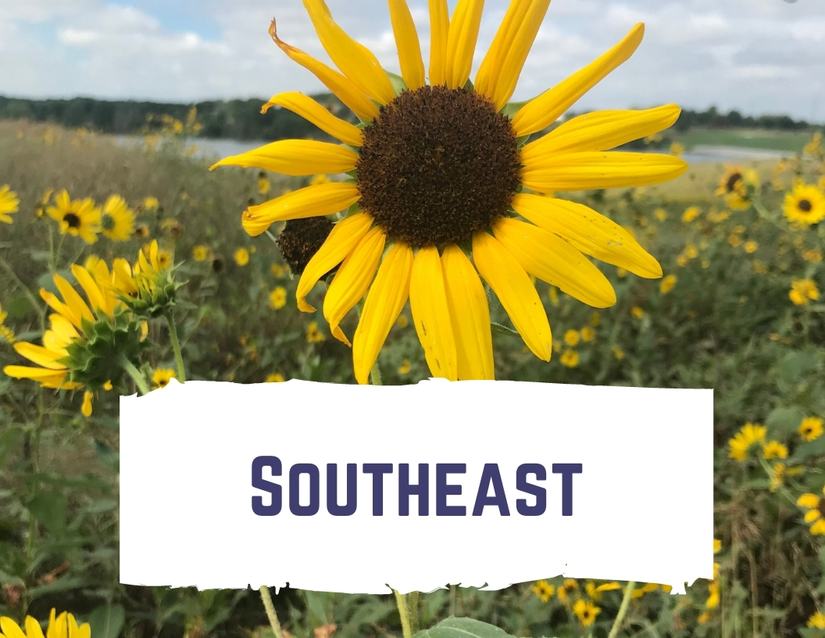As a born and raised Nebraska girl, I’ve spent a lot of time exploring the state (and I’m not done). It’s beautiful! The thing that surprises me, though, is how little the rest of the world knows about Nebraska. So, here’s a look at all the great things to do in Nebraska and why you just might want to plan a trip to visit.
Where is Nebraska?
Nebraska is right smack dab in the middle of the U.S. We’re part of the Midwest, or if you want to say, the Great Plains.
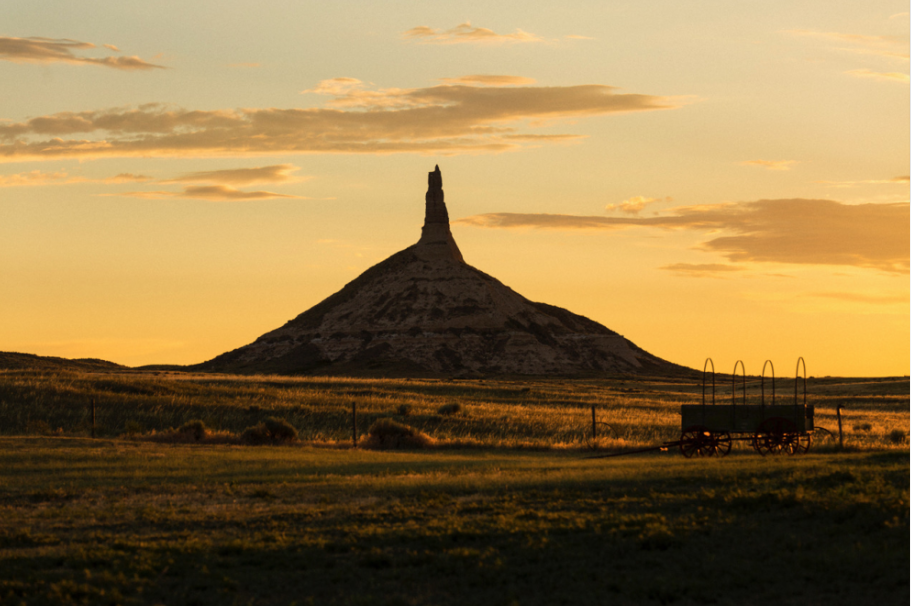
While it’s tempting to say the state is entirely made of farmland, that wouldn’t be accurate. We have our own mini Badlands area. There’s the Sandhills of north central Nebraska. And we have cities that can rival much larger ones with restaurant and entertainment options but at a fraction of the price.
And no, it’s not all flat. Try biking in eastern Nebraska.
And you’ll find some lovely rolling hills on your cross-state drive…but, yes, most of the state is pretty flat if you want to compare it to, say, Colorado.
Places to visit in Nebraska
Nebraska is huge, so I’ll recommend things in each region and you decide whether to traverse the whole state or narrow it down.
The Panhandle/Northwestern Nebraska Region
This is the northwestern portion of Nebraska. Here, you’ll find a bit more rugged terrain that you wouldn’t typically associate with the state. I love the area, but it’s quite a drive for us Omaha-based people.
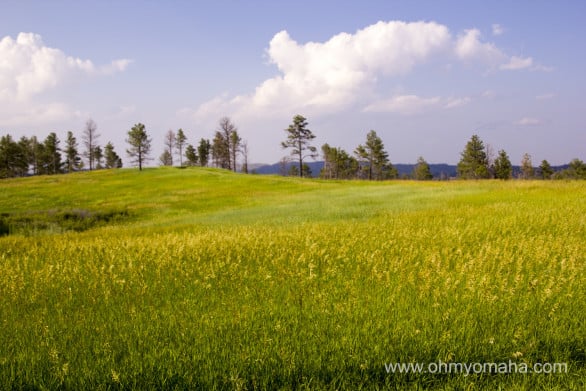
The Nebraska Panhandle is where you’ll encounter the state’s most significant landmarks, Scotts Bluff National Monument and Chimney Rock National Historic Site. The Panhandle is also home to Carhenge, that quirky road stop in Alliance.
Two stellar state parks are in the area too: Chadron State Park and one of my favorite state parks, Fort Robinson State Park in Crawford.
You’ll want to visit some of the other towns in region, especially if you’re not particularly outdoorsy and hiking to see landforms isn’t your thing. I’ve written all about the restaurant & breweries, shops and other things to and see in the Nebraska Panhandle in a separate post.
The Panhandle includes the towns above, as well as: Gering, Gordon, Hay Springs, Harrisburg, Kimball, Lewellen, Mitchell and Oshgosh.
The Sandhills
Every June growing up, my family would travel through the Nebraska Sandhills for our annual canoe trip down the Niobrara River. This is a beautiful, scenic and easy river to canoe (or float on a tube, if that’s your thing), and you can dock your watercraft at Smith Falls State Park, and see one of the state’s few waterfalls. It’s pretty impressive.
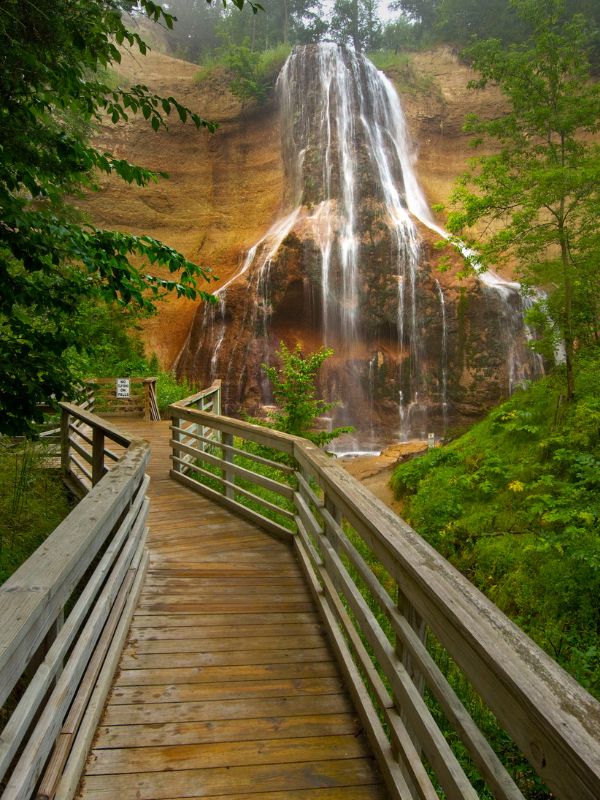
The closest city is Valentine, and while you’re there, don’t skip Merritt Reservoir State Recreation Area. It’s especially well-known for its dark skies. And if you’re thinking fo trying “tanking,” this is a good region to find outfitters. Tanking, for the uninitiated, is a float trip on a river where your vessel is a tricked out cattle tank.
Other cities and towns of note in the Sandhills: Bassett, Broken Bow, Burwell, North Loup, Nenzel, Sargent, and St. Paul.
Southwest Nebraska
You like trains or big lakes? Southwest Nebraska is your region. You’ll find the state’s popular Lake McConaughy State Recreation Area here (we call it Lake Mac), as well as nearby Ogallala, where you can catch a fun Wild West show at Front Street and the Cowboy Museum.
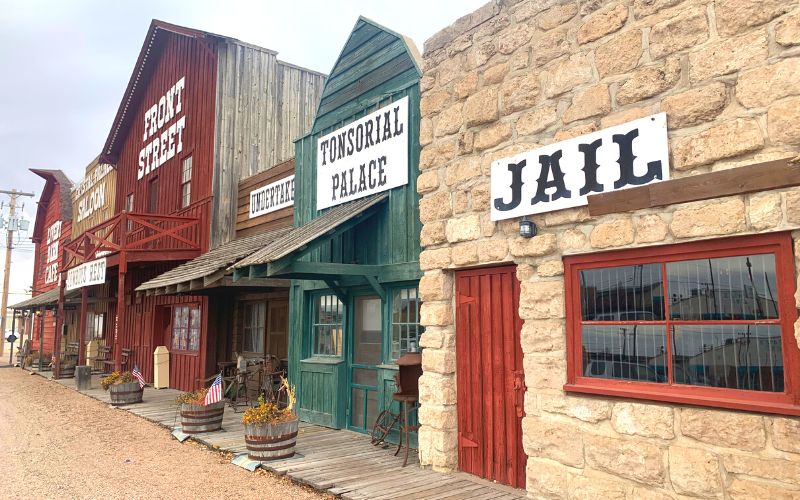
North Platte is home to the world’s largest railroad classification yard at the Golden Spike Tower and Visitor Center. It’s also closely linked to Buffalo Bill Cody, so if his story intrigues you, go check out Buffalo Bill Ranch State Historical Park and State Recreation Area.
Other towns of note: McCook, Stratton, Lemoyne, Grant, Paxton, Culbertson, Madrid, and Sutherland.
South Central Nebraska
I suppose there’s more to south central Nebraska than Sandhill cranes, but it’s really the first thing I think of. The majestic sight of the magnificent spring and fall migrations attracts hundreds of thousands of visitors to Kearney and surrounding areas each year.
If you’re a literary fan, you may know of Willa Cather – and you can visit Red Cloud to learn much more about her. And on a totally unrelated note, Hastings is where you can go to learn more about Kool-Aid, where it was invented.
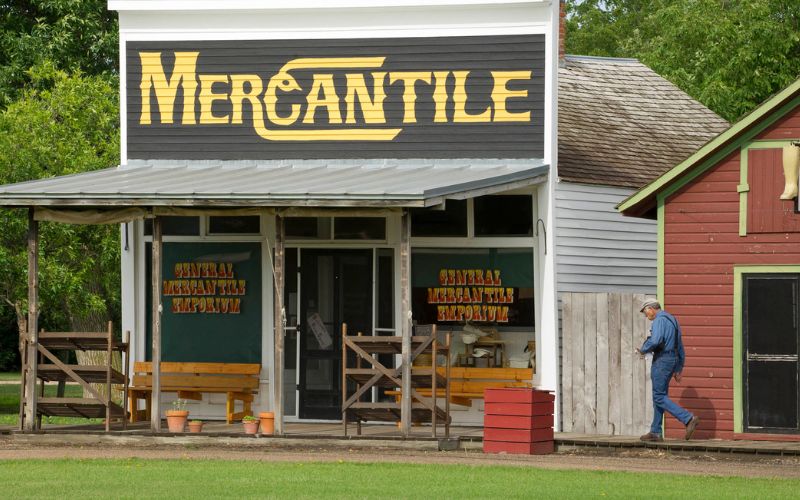
To learn a bit more about pioneer life, head to Pioneer Village in Minden. And the Pony Express? There’s a preserved cabin that was a stop in Gothenburg and you can tour it for free (it’s pretty small so I use the word “tour” pretty loosely).
And each August, head to Grand Island to experience the Nebraska State Fair. There are 4-H shows, concerts, a midway, and so much food on a stick.
Other towns of note: Cozad, Gibbon, and Cambridge.
Northeast Nebraska
When I think of the northeastern region of Nebraska, I picture of scenic river vistas, hikes and water sports. I think of Ponca State Park and Lewis & Clark State Park.
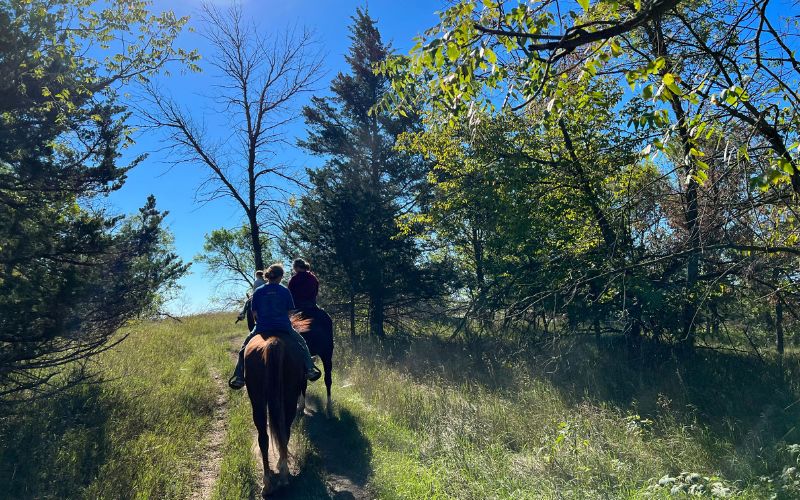
Notable history has played out in the region, and you can learn more about it in towns like Fort Calhoun and Genoa. And if you’re Irish (or just Irish on St. Patrick’s Day), don’t miss the celebrations in O’Neill around St. Patrick’s Day or Greeley in September (there’s a half-way to St. Patrick’s Day celebration).
There’s a lot to discover in northeast Nebraska including: Blair, Columbus, Fremont, Genoa, Greeley, Niobrara, Neligh, Newman Grove, Norfolk, Pierce, Royal, South Sioux City, Tekamah, Verdigre and Wayne. I’ve written an entire blog post dedicated to the region.
Southeast Nebraska
Southeast Nebraska is my home turf and largely the area I write about on this blog. Omaha is the largest city in the state and located in the southeast corner, and I’d recommend at least two to three days to explore some of our highlights. Omaha’s zoo is a must, but we have some fantastic museums, neighborhoods, and lord, do we have great restaurants.
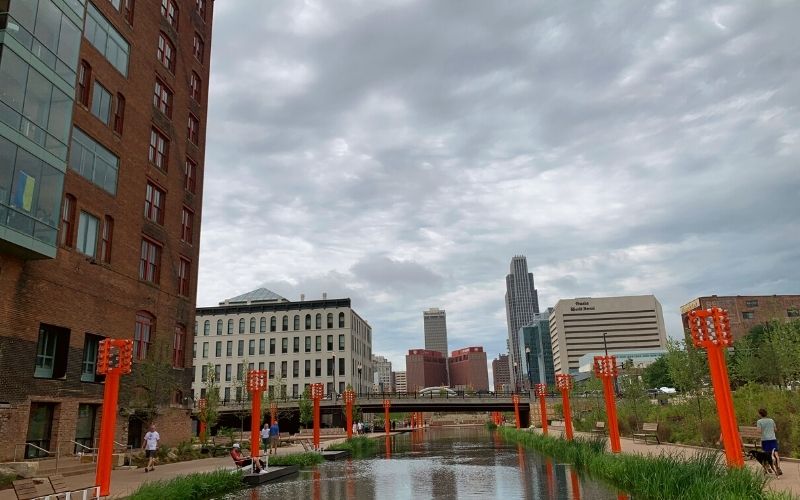
Lincoln is the capital of Nebraska and less than an hour drive from Omaha. The University of Nebraska-Lincoln makes this a fun college town (so catch a football game, if you can, or a volleyball match), and visit the Haymarket. My kids are also fans of the zoo and Morrill Hall (our state’s natural history museum) in Lincoln.
A few other of my favorite cities to visit in the southeast: Nebraska City, home of Arbor Day and a wonderful place to visit in the fall, and Ashland, with attractions very near each other including the Nebraska Wildlife Safari, Strategic Air Command and Aerospace Museum, and Mahoney State Park…plus my favorite cidery tasting room, Glacial Till.
You’ll find some fabulous spots for glamping in southeast Nebraska, including a spot in Ashland and Nehawka. One of the nicest, artsy small towns you’ll ever find is Brownville, and it’s not too far from Indian Cave State Park, with excellent hiking trails.
If you’re outdoorsy, plan a visit to Fontenelle Forest in Bellevue, take a hike and then try the TreeRush ropes course there.
Other notable towns in southeast Nebraska: Papillion, Bennington, Central City, Gretna, Waterloo, La Vista, Wilber, Hampton, Denton, Daykin, Fairfield, Ohiowa, and Beatrice.
Top tourist attractions to visit in Nebraska
I covered quite a bit in the previous sections about each region, but if I had to pick some big ones to feature, here they are:
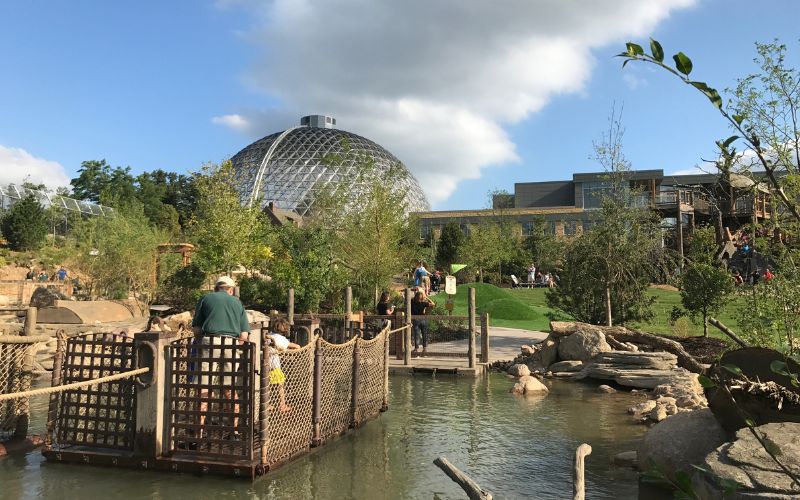
- The top tourist attraction in the state is in my hometown, Omaha – Omaha’s Henry Doorly Zoo & Aquarium. It’s regularly ranked among the best zoos in the world, and for good reason.
- On the other side of the state, Fort Robinson State Park is a big attraction, especially if you want a taste of the west (think, stagecoach rides, off-road jeep rides, rodeos, trail rides, etc.).
- Someone has probably already told you this: Memorial Stadium in Lincoln becomes the third largest city in Nebraska on Husker game day. Nebraska loves their football team and seeing the sea of red in person is an unforgettable experience.
- If you like your touristy sites to be off-the-beaten path attractions, then we’ve got those too. Just expect a bit of a drive to get to them.
Free things to do in Nebraska
The great things towns across Nebraska do well are annual festivals – and they’re free to attend (most of the time). From Kool-Aid Days to AppleJack Festival and Wayne Chicken Show, we’ve got a variety. One of the biggest free festivals to check out is the Fourth of July celebration in Seward.
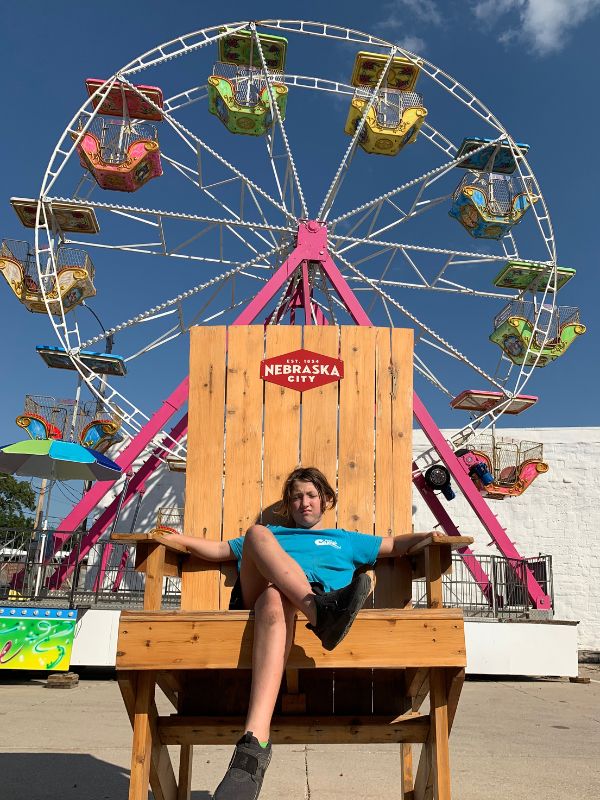
Many Nebraska museums – some of the state’s best, actually – have free admission. If art is your thing, definitely check out Joslyn Art Museum in Omaha (though, it’s closed for renovations until 2024) and Sheldon Art Museum in Lincoln. And while you’re in Lincoln, swing by the capitol building for a tour and the Sunken Gardens for a relaxing stroll (both are free).
Other great free places:
- Crane Trust Nature & Visitor Center in Grand Island (tours are extra)
- Boys Town is a National Historic Landmark in Omaha and free to visit. Check out Boys Town Hall of History, Visitors Center & Father Flanagan’s House.
- The Holy Family Shrine in Gretna is an architectural marvel, and peaceful to boot.
- Homestead National Monument of America in Beatrice. This national monument and visitor center explains the importance of the Homestead Act of 1862. Even the special events are free.
- Carhenge in Alliance is free. It’s exactly what it sounds like.
Food to try in Nebraska
Nebraska has a reputation as a meat and potatoes kind of state, and to an extent, we got that going for us. If you want steaks – like really well prepared steaks – we got ‘em. Omaha has an abundance of steakhouses.
Omaha is also where the Reuben sandwich was invented, as was butter brickle ice cream.
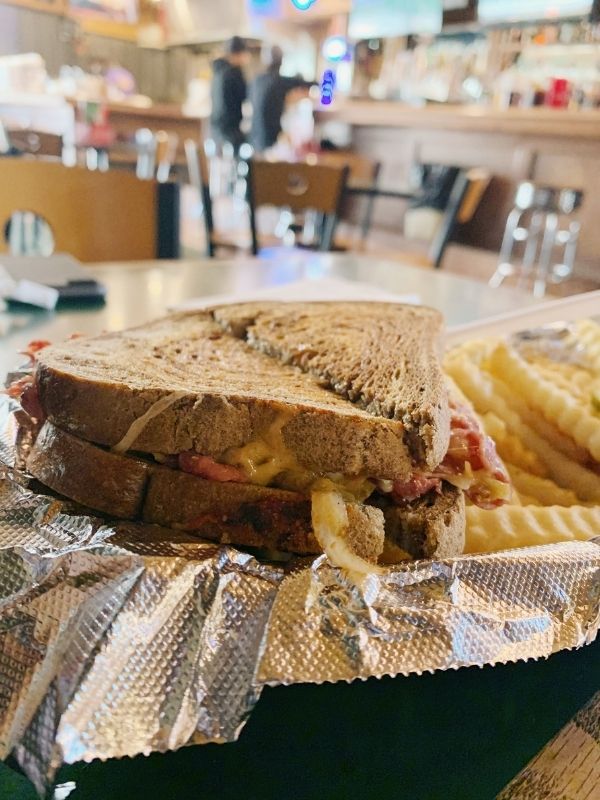
I fully embrace that we are also the Cornhusker state and if you’re here in the summer, you must try our sweetcorn on the cob. Most any fair will likely have some to buy.
We also have a thing called Runza. It’s our local fast food chain and they sell runza sandwiches, which are kind of like the German-Russian bieroc, or stuffed bun. It’s a favorite of ours, but don’t feel bad if you don’t like it. It is stuffed with meat and sauerkraut, after all. For a homemade version, go to Sehnert’s Bieroc and Bakery in McCook.
If you want to plan your tour around Nebraska based on food…let’s be friends. Here are a few ideas to inspire a trip:
Nebraska road travel information
The main interstate crossing through Nebraska, from east to west, is Interstate 80. It’s a pretty efficient way to get across the state but it doesn’t showcase the best the state has to offer. To really get a feel for Nebraska, you’ll need to travel byways.
Instead of I-80, I recommend driving the Lincoln Highway Scenic & Historic Byway. It goes east to west across the state and hits a lot of the highlights I mention above.
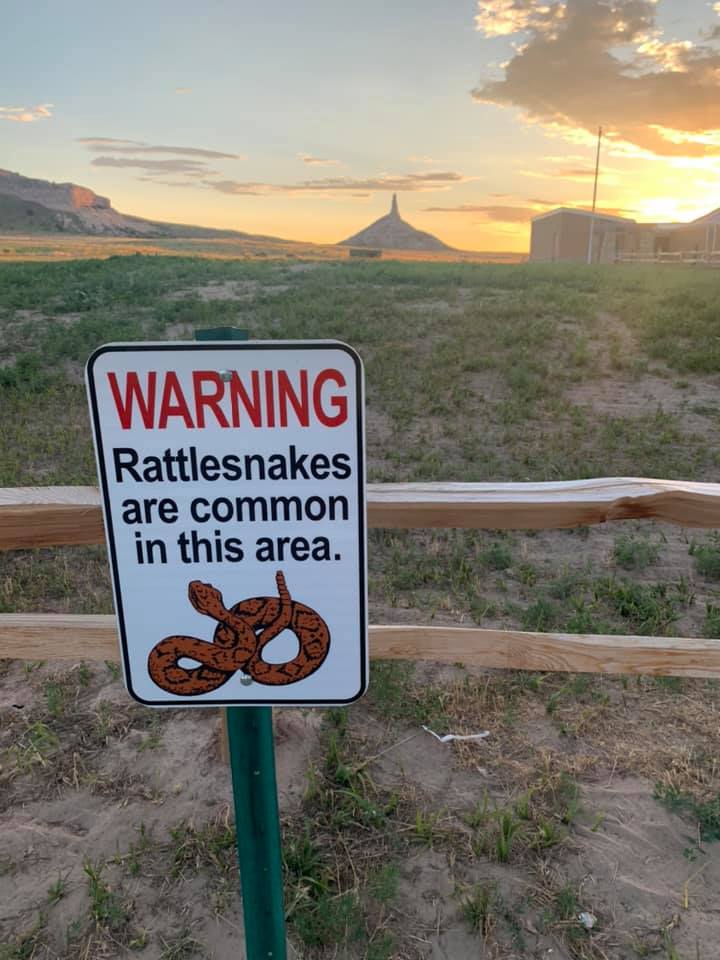
- Outlaw Trail Scenic Byway: This is what I’ve driven to get from Omaha to Valentine for our annual canoe trips. Traveling along the northern border of Nebraska, this byway passes through scenic Sandhill vistas and towns that attract outdoor enthusiasts like Niobrara and Ponca.
- Bridges to Buttes Scenic Byway: Take this byway from Valentine and continue west for even more striking scenery. You’ll pass near the popular summer destination, Merritt Reservoir, as well as rugged terrain of Toadstool Geological Park (it’s way off the beaten path but worth it) and Hudson-Meng Research and Education Center (it’s an active archaeological dig site).
- 385 Gold Rush Scenic Byway: Some of the most striking landscape in Nebraska is found along this byway. From the lush Chadron State Park down south to the rocky formations of Courthouse Rock and Jail Rock, you’ll have some photo-worthy views. Oh, and Carhenge. You’ll pass near there, too.
- Western Trails Scenic & Historic Byway: Hitch your wagon for this byway – you’ll stop along the way to see many of the same vistas that pioneers once marveled over. You’ll want to plan a stop at Wildcat Hills Nature Center. You’ll also pass by iconic landmarks of Nebraska, Scotts Bluff National Monument and Chimney Rock. Plan to relax for at least a day or two at Lake Mac.
- Loup Rivers Scenic Byway: You’ll get to enjoy the Sandhills as well as bucolic farmlands on this drive. Pack a swimsuit so you can paddle (or tank) one of the rivers near Burwell. You could consider camping at Calamus Reservoir State Recreation Area – it’s a relaxing place to unwind. You’ll also pass through Scotia, home to Happy Jack Peak and Chalk Mine.
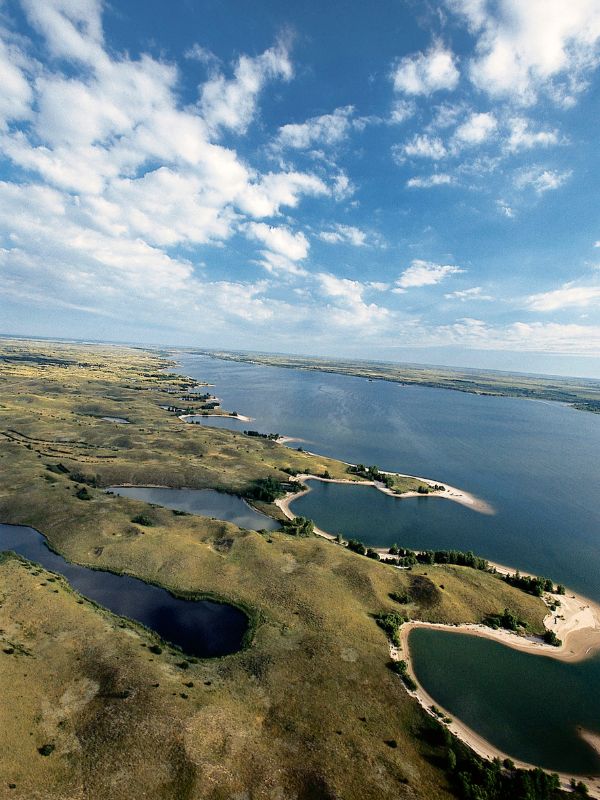
- Sandhills Journey Scenic Byway: Cutting through central Nebraska, the quiet trail leads you through the sandy grass dunes the state are known for and, for a change of scenery, the Nebraska National Forest. You’ll want to plan an overnight stop because this is prime stargazing grounds.
- Heritage Highway Scenic Byway: This is a good byway to get a feel for Nebraska history and the prairie, as you’ll pass by Red Cloud (see the opera house and Willa Cather’s home), Homestead National Monument of America in Beatrice, and Rock Creek Station State Historical Park.
- Lewis & Clark Scenic Byway: If you drive along the Missouri River on Interstate 29, the scenery isn’t much to write home about, but if you take the scenic route on this byway, you’ll be much happier. Plus, you’ll drive by Tekamah where you can get some sweet treats at Master’s Hand. You’ll also pass through Winnebago Indian Reservation and you’ll be close enough to Fort Calhoun to warrant a stop at Fort Atkinson State Historical Park (time it right and there will be live re-enactors!).
Weather in Nebraska
If you’re from the Midwest, you already know this: Weather can be unpredictable, and that’s especially the case in Nebraska. It’s also a large state, so while it may be snowing in one region, it’s clear skies in another. With that in mind, here’s a look at visiting Nebraska in all kinds of weather:
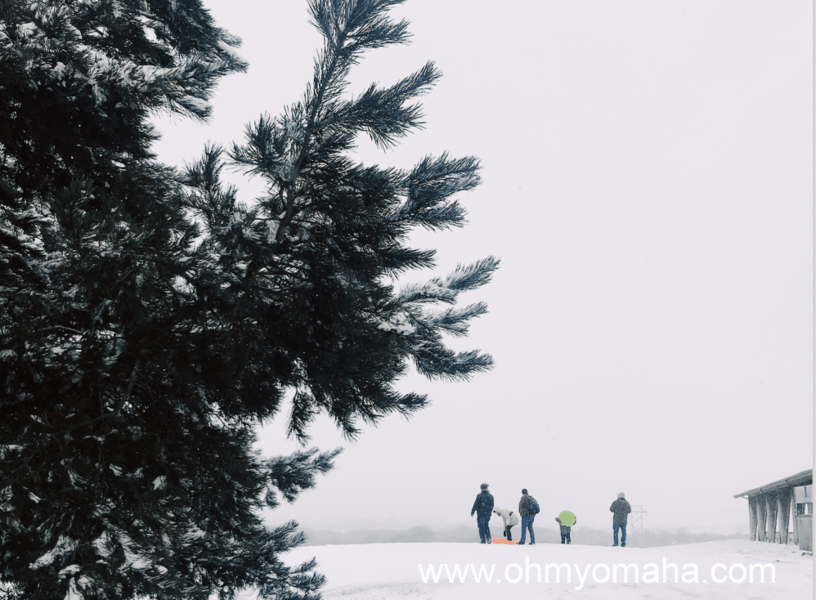
January: One of the coldest months of the year in Nebraska, January has an average low temperature in the teens and an average high in the lower-30s. The wind makes it feel much, much colder.
February: February is just like January, though it seems crueler. I call this the gray month in Nebraska. It is also one of the driest months in Nebraska, so while it’s bone cold, it’s not likely much snow will occur. Fun fact for Nebraska: School does get cancelled for the weather being dangerously cold.
March: A glimmer of spring begins in March, with average highs creeping toward 50 degrees. It still can be quite cold, though, with average lows in the upper-20s. St. Patrick’s Day celebrations are notoriously spent bundled up.
April: While once in a great while, it will snow in April, it’s not likely. April has average highs in the mid-60s. It’s still what I’d call warm, but this about the time of year you’ll start seeing some Nebraskans in shorts.
May: May is the rainiest month in Nebraska (well, eastern Nebraska…the western part is much drier). The temperature is mild and spring-like in May, with highs averaging in the low-70s. Toward the end of May, outdoor pools start opening up in eastern Nebraska.
June: June is a great time to visit Nebraska, when it’s warm but not oppressively warm yet (usually). Highs reach mid-80s. There’s a higher chance for rain, still, and this is also when Mosquito Season really kicks in.
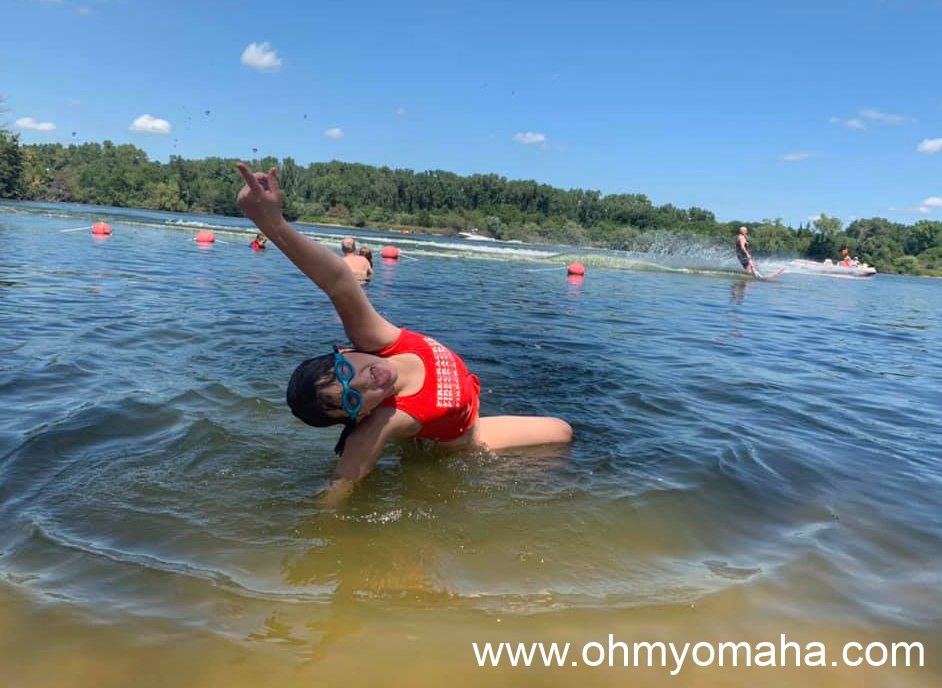
July: One of the warmest and most humid months of the year, the average temperature in Nebraska for July is 87 degrees. It’s one of the most popular times to visit Nebraska since schools are out and most places are open longer for summer hours.
August: Like July, August is one of the warmest months in Nebraska. With no scientific evidence to back this claim up, if the temperature will exceed 100 degrees, it will most likely happen in August.
September: September can sometimes feel like summer in Nebraska, and while the average highs are in the 70s, it can and will get quite hot on some days.
October: Nebraska has fake fall and real fall. Real fall is in October. The leaves will begin changing earlier in northern Nebraska, usually around the second week of October. Southern Nebraska will have changing leaves typically around the third week. Highs vary from 50 to 70 degrees in October, and lows have been known to drop to below freezing once or twice in the month.
November: With an average high in the upper-40s, November marks the early days of winter for Nebraska. It’s the month with the fewest hours of sunshine, too. Visitors are unlikely to encounter inclement weather, at least.
December: December is the one month I wish for snow, and as luck would have it, it’s one of the driest months of the year. And the coldest. The average high is in the 30s. White Christmases aren’t a given in Nebraska.
